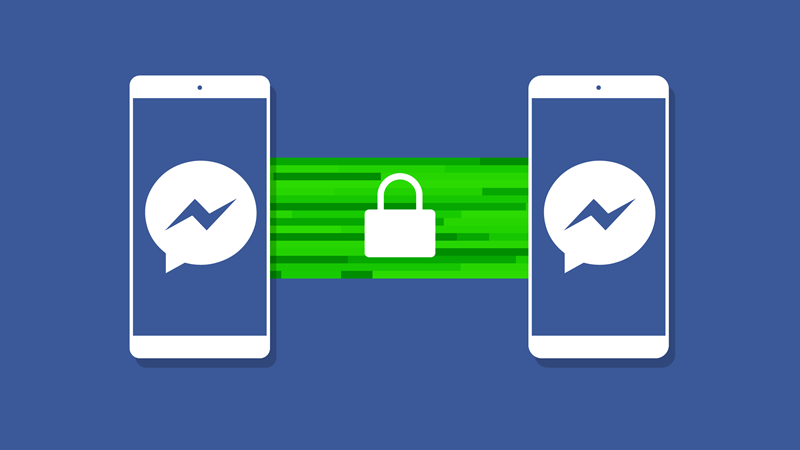Messaging Layer Security (MLS) is a cutting-edge protocol designed to offer end-to-end encryption for group messaging systems with the utmost efficiency and user-friendly approach. The primary goal of MLS is to ensure the privacy and security of messages exchanged in a group conversation by encrypting them. With MLS, each participant in the conversation has the ability to encrypt a message that can only be decrypted by the intended recipients, thus ensuring that no unauthorized parties can access the content. This high level of security is achieved without compromising the usability of the system, making it a highly attractive solution for businesses and organizations that require secure group communication.
MLS operates on the principle of ‘ratchet-forward’ encryption, which means that the encryption keys are constantly changing, reducing the risk of compromise. Even if an attacker manages to obtain a key, they will not be able to decrypt past or future messages, only the ones that were encrypted with that specific key. This feature greatly enhances the security of the system and provides a robust defense against potential threats.
Moreover, MLS is designed to be efficient and scalable. It employs a binary tree structure for key management, which reduces the computational and communication overhead associated with adding or removing members from the group. This means that MLS can accommodate large groups without suffering from performance degradation. As a result, organizations can maintain secure, encrypted communication across their workforce, regardless of size.
Another significant advantage of MLS is its user-friendly nature. Its application is seamless, requiring no special knowledge or skills from the users. The complexity of the encryption process is hidden behind a simple, intuitive interface, making it easy for users to communicate securely without having to understand the intricate details of encryption. This encourages widespread adoption of the protocol, as it does not disrupt the normal workflow of users and requires minimal training to use effectively.
Furthermore, MLS is a flexible protocol that can be adapted to various communication environments. It supports both asynchronous and synchronous messaging, and it can be deployed in both centralized and decentralized systems. This versatility makes MLS applicable to a wide range of scenarios, from corporate communication systems to social networking platforms.
In conclusion, Messaging Layer Security is an effective and user-friendly solution for end-to-end encryption in group messaging systems. By providing strong security, scalability, ease of use, and flexibility, MLS addresses the increasing need for secure group communication in today’s digital era. As the digital landscape continues to evolve, protocols like MLS will play a vital role in protecting the privacy and integrity of our digital conversations.

Key Features of Messaging Layer Security
Messaging Layer Security (MLS) is a protocol designed to provide end-to-end encryption for group messaging applications. One of the key features of MLS is its ability to offer security even when new members join or existing members leave the group. It utilizes an “asynchronous ratchet tree” that allows members to compute a shared key, which is updated whenever the membership changes, ensuring continued security and privacy.
Another critical feature is its support for substantial scalability. MLS can handle large groups of users, making it ideal for enterprise-level applications. It also supports secure messaging in an asynchronous environment, meaning that it doesn’t require all users to be online simultaneously to send or receive messages. This is a significant advantage in today’s global communication environment where users may be spread across various time zones.
MLS also provides forward and backward secrecy. Forward secrecy ensures that if a key is compromised in the future, past communications remain secure. Conversely, backward secrecy guarantees that future communications remain secure even if a key is compromised in the past. This dual security mechanism protects user data even in the event of a key compromise.
Finally, it is important to note the transparency feature of MLS. The protocol is open source, meaning that its code can be reviewed by anyone. This not only promotes trust in the system but also allows for continuous improvements and updates. By allowing anyone to inspect the code, it ensures that the protocol is as secure and efficient as possible.
In conclusion, MLS is a robust security protocol for group messaging applications, offering features like scalability, support for asynchronous communication, forward and backward secrecy, and transparency. Each of these features contributes to the overall security and efficiency of the system, ensuring the privacy and integrity of user data.

Enhancing Usability in Secure Messaging
Enhancing usability in secure messaging is an essential consideration for many technology companies, as it provides a better user experience while ensuring a high level of privacy and security. It involves improving the interface and functionality of secure messaging platforms to make them more user-friendly and intuitive. Enhancing usability can range from simplifying the process of sending encrypted messages to making it easier to control privacy settings. For example, incorporating features like drag-and-drop file sharing, voice messaging, or quick access to contacts can significantly enhance usability. It’s also vital to create platforms that are easily navigable for newcomers to secure messaging.
However, improving usability shouldn’t compromise security. For instance, while auto-saving drafts can enhance usability, it can create potential security risks if these drafts contain sensitive information. Therefore, striking a balance between usability and security is crucial. Developers need to ensure that security protocols are not too complicated for average users. Options for two-factor authentication, end-to-end encryption, and self-destructing messages can be included without making the platform too complex for users.
Efficient customer support is also a pivotal aspect of usability. Users need to have their concerns and queries addressed promptly, which requires a robust, responsive support system. Integrating AI chatbots for immediate assistance can be an effective strategy. Simultaneously, regular updates and bug fixes are necessary to keep the app running smoothly.
Lastly, cross-platform compatibility increases usability by allowing users to access their messages from various devices. A secure messaging app should be compatible with different operating systems, such as iOS, Android, and Windows. This way, users can send and receive secure messages, regardless of the device they’re using. Enhancing usability in secure messaging is a continuous process that requires regular updates and improvements based on user feedback. By prioritizing these aspects, technology companies can provide a secure messaging platform that is both easy to use and highly secure.
Comparing MLS with Other Encryption Protocols
The Multi-Level Security (MLS) protocol is a robust encryption standard that has been widely used in systems requiring high degrees of information protection. Its unique tiered approach to data security allows for the efficient handling of sensitive information across various levels of clearance. When compared with other encryption protocols like Transport Layer Security (TLS), Secure Sockets Layer (SSL), and Advanced Encryption Standard (AES), MLS holds its own in terms of security features. For instance, unlike TLS and SSL that primarily secure data in transit over networks, MLS is designed to protect data both in transit and at rest.
It achieves this through a combination of encryption, access controls, and mandatory security policies. However, it’s important to note that the MLS system can be more complex to implement due to its intricate hierarchical structure. This potentially makes it less flexible than protocols such as AES, which is a symmetric encryption algorithm known for its adaptability and speed. Despite this, MLS is highly regarded for its ability to prevent unauthorized access to classified information, making it a popular choice in environments where high-level data security is a priority.
It’s also worth mentioning that, unlike many encryption protocols that focus on the encryption of data alone, MLS also focuses on the management of user access rights, hence providing a comprehensive security approach. Therefore, while each encryption protocol has its strengths and weaknesses, the choice of protocol should be based on the specific security needs of an organization, the sensitivity of the data involved, and the resources available for implementation.

Implementation of MLS in Modern Applications
The integration of Multi-Level Security (MLS) in modern applications has become a pivotal aspect in ensuring robust, seamless, and secure operations in today’s digitally-driven world. MLS is a framework that permits access to information based on security clearances and predefined levels of access control. This sophisticated approach to security is crucial for modern applications that handle sensitive data, especially in sectors such as defense, healthcare, finance, and information technology. MLS plays a significant role in safeguarding data from unauthorized access and potential breaches, thereby ensuring the integrity, confidentiality, and availability of information.
The implementation of MLS in modern applications involves defining various levels of security clearance and categorizing data accordingly. For instance, a user with a high-security clearance would have access to all data, while a user with a lower clearance might only access a specific subset of the data. This hierarchy-based approach safeguards sensitive information from potential misuse or mishandling, thereby enhancing the overall security of the application.
Furthermore, integrating MLS in modern applications can substantially mitigate the risk of internal and external security threats. It can prevent unauthorized users from gaining access to classified information, thus avoiding potentially damaging data leaks. Additionally, it can protect applications from various cyber threats such as phishing, ransomware, and other forms of cyberattacks, which have become increasingly prevalent in the digital age.
In conclusion, the implementation of MLS in modern applications is an essential strategic initiative that ensures secure data handling, enhances application robustness, and ultimately strengthens the security posture of organizations. With the rising threats in the cyber world, MLS provides an effective solution to safeguard critical information, thereby playing a crucial role in the realm of cybersecurity.

Real-World Benefits of MLS Encryption
MLS Encryption, short for Multi-Level Security Encryption, presents real-world benefits that are paramount in the current digital era. Primarily, it provides an enhanced level of security to all forms of data, making it difficult for unauthorized individuals to gain access. This is particularly beneficial for organizations dealing with sensitive information, as it ensures that only those with the appropriate clearance level can access certain data.
Moreover, MLS Encryption offers protection against data breaches. In this era of increased cyber threats, it reduces the vulnerability of information to hacking or unwarranted intrusion. By using different levels of encryption, it provides a robust security system that can protect the most confidential data, thereby reducing the likelihood of security breaches.
In addition to these benefits, MLS Encryption also promotes data integrity. By ensuring that information is only accessible to authorized personnel, it prevents unauthorized modification or manipulation of data. This can be particularly useful in preserving the accuracy and consistency of data in various sectors including finance, healthcare, and education.
Furthermore, MLS encryption is essential in maintaining privacy. It safeguards personal information, making it a valuable tool in an age where user data is often shared across multiple platforms. It aids in preventing the unwanted dissemination of personal data, thereby playing a crucial role in preserving individuals’ privacy rights.
Lastly, MLS Encryption can lead to significant cost savings. By preventing data breaches and maintaining data integrity, organizations can avoid the financial losses associated with these incidents. It also reduces the costs associated with data recovery and system repairs after a security breach.
In conclusion, MLS Encryption offers notable benefits in terms of enhanced security, data integrity, privacy protection, and cost savings. Given the increasing reliance on digital data in various sectors, the importance of such a robust security measure cannot be overstated.
